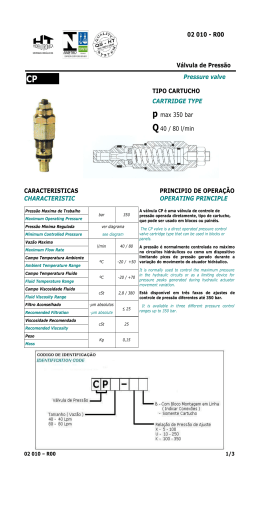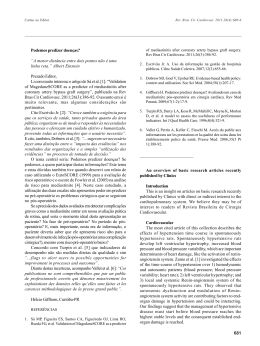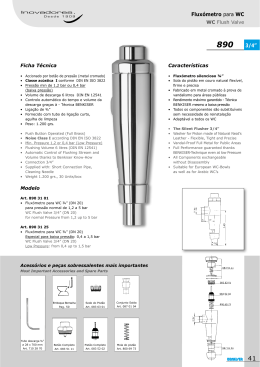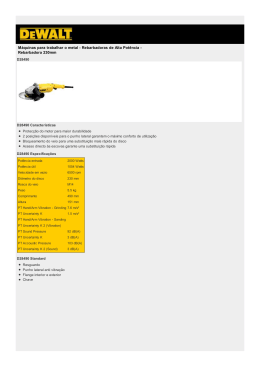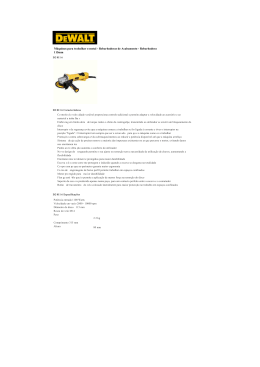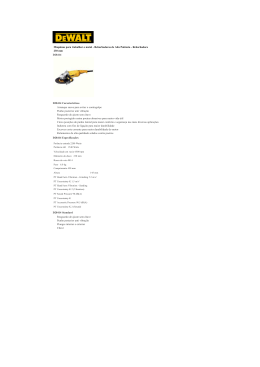PRESSÃO - CONCEITO E UNIDADES PRESSURE - CONCEPT AND UNITIES PRESSÃO é a força normal (perpendicular à área) exercida por unidade de área. P=F/A F = força (lbf, kgf, N) A = área (in², m², mm², ft²) P = pressão (lbf/in2 [psi], kgf/cm², N/m²[kg/ms²] PRESSURE is the normal force (perpendicular to the area) exerted per unit area. P=F/A F = force (lbf, kgf, N) A = area (in ², m², mm ², ft ²) P = pressure (lbf/in2 [psi], kgf / cm ² N / m² [kg / ms ²] A pressão atmosférica é medida com o barômetro que foi inventado por Evangelista Torricelli em 1643. Ao nível do mar, a pressão atmosférica é de cerca de 15 libras por polegada quadrada, 29,9 polegadas de mercúrio ou 760 milímetros de mercúrio (760 mmHg). Isto é equivalente a 101,3 quilopascals (101,3 kPa). O Sistema Internacional (SI) define o PASCAL (Pa) como unidade de pressão sendo igual a um Newton por metro quadrado (N/m²=kg/ms²) Atmospheric pressure is measured with a barometer that was invented by Evangelista Torricelli in 1643. At sea level, atmospheric pressure is about 15 psi, 29.9 inches of mercury or 760 millimeters of mercury (760 mmHg). This is equivalent to 101.3 kilopascals (101.3 kPa). The International System (SI) defines the PASCAL (Pa) pressure unit as being equal to one Newton per square meter (N / m = kg / ms ²) Tipos de Pressão (Types of Pressure) Pressão absoluta é a pressão medida em relação ao vácuo absoluto. No vácuo absoluto a pressão é sempre igual a zero. A pressão absoluta independe da pressão atmosférica do local onde ela é medida.Veja diagrama. Pressão atmosférica é a pressão absoluta na superfície terrestre devida ao peso da atmosfera. A pressão atmosférica depende da altitude do local onde está sendo medida e é maior ao nível do mar. Em locais mais altos a pressão atmosférica é menor. A pressão atmosférica é também denominada pressão barométrica. Pressão manométrica é a pressão medida com relação à pressão da atmosfera. Assim, a pressão atmosférica é a diferença entre a pressão absoluta e a pressão manométrica. A pressão manométrica é a que lemos nos manômetros. Pressão Padrão (ou Pressão Standard) - Em 1954, a 10 ª Conferência des Mesures Poids ET (CGPM) adotou uma atmosfera padrão para uso geral e definiu-o como sendo precisamente 1.013.250 dinas por centímetro quadrado (101.325 Pa). Nce, e por uma questão prática, realmente reflete o nível médio do mar pressão para muitos dos países industrializados (aqueles com latitudes semelhantes a Paris). Em química, a definição original de "temperatura e pressão padrão" pela União Internacional de Química Pura e Aplicada IUPAC) foi uma temperatura de referência de 0 ° C (273,15 K) e pressão de 101.325 Pa. Absolute pressure is the pressure measured relative to absolute vacuum. In absolute vacuum pressure is always zero. The absolute pressure is independent of the atmospheric pressure where it is medida.Veja diagram. "Atmospheric pressure is the absolute pressure in the surface due to the weight of the atmosphere. Atmospheric pressure elevation depends on the location being measured and is larger at sea level. Locations higher in the atmospheric pressure is lower. Atmospheric pressure is also called barometric pressure. " Gauge pressure is the pressure measured relative to atmospheric pressure. Thus, the atmospheric pressure is the difference between the absolute pressure and gauge pressure. The pressure gauge is what we read in the manometers. TECÉM - Tecnologia Empresarial Ltda - www.tecem.com.br "Standard Pressure (Pressure or Standard) - In 1954, the 10th Conference des Poids ET Mesures (CGPM) adopted standard atmosphere for general use and defined it as precisely 1,013,250 dynes per square centimeter (101 325 Pa). Nce , and as a practical matter, truly reflects the mean sea level pressure for many industrialized countries (those with latitudes similar to Paris). In chemistry, the original definition of "" Standard temperature and pressure "" International Union of Pure and Applied Chemistry IUPAC) has a reference temperature of 0 ° C (273.15 K) and pressure 101 325 Pa. " A pressão atua pependicularmente a todas as superficies internas do recipiente onde está contido o fluido. Na figura o êmbolo, sobre o qual é aplicada uma força, pressiona o fluido contido no reservatório. The pressure acts pependicular to all interior surfaces of the container where the fluid is contained. In the figure the plunger on which a force is applied, pressing the fluid contained in the reservoir. TECÉM - Tecnologia Pressão acima da atmosférica Pressure above atmospheric pressure Pressão absoluta Absolute pressure Kgf/cm2a, psia, bara Pressão manométrica Gauge pressure Kgf/cm2g, psig, barg Pressão atmosférica Atmospheric pressure Barometric pressure Pressão barométrica Pressão manométrica (vácuo) Gauge pressure (vacuum) Kgf/cm2g, psig, barg Pressão abaixo da atmosférica Pressure below atmospheric pressure Pressão absoluta Absolute pressure Kgf/cm2a, psia, bara Pressão absoluta ZERO Absolute ZERO pressure UNIDADES DE PRESSÃO (PRESSURE UNITIES) Atm Bar Atm Bar 1 101.325 Dyne/cm2 (bária) In de Hg (0°C) In de H2O (4°C) 1.01325 x 106 299213 406.8 9.86923x 10-1 1 106 29.53 401.48 Kg/m2 1.033227 x 104 14695595 2116.22 760 1.0197 x 104 14504 2088.5 750.06 2 Lb/In (psi ) Lb/ft2 mm de Hg Microns Pascals 3 760 x 10 1.01325 x 105 3 750.06 x 10 1 x 105 Dyne/cm2 (Bária) In de Hg 0ºc In de H2O 4ºc 9.86923 x 10-7 1 x 10-6 1 3.34207 x 10-2 3.3864 x 10-2 3.386 x 104 1 13.60 345.3 0.4912 70726 25400 2.458 x 10-3 2.491 x 10-3 2.491 x 103 7.355 x 10-2 1 25.40 9.678 x 10-5 9.8067 x 10-5 98067 3.6126 x 10-2 5202 1868 1.423 x 10-3 0.2048 2.953 x 10-5 4.0148 x 10-4 1.0197 x 10-2 1.4504 x 10-5 2.0885 x 10-3 7.5006 x 10-4 0.75006 10-1 4 2.54 x 10 3.386 x 103 3 1.868 x 10 2.491 x 102 Kg/m2 2.896 x 10-3 3.937 x 10-2 1 7.3558 x 10-2 73558 98067 TG 16
Download
